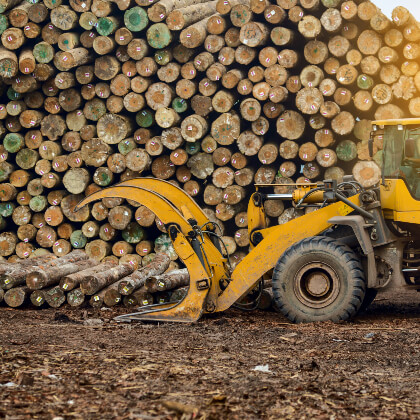
Weighing timber accurately is crucial for ensuring fair trading, efficient logistics, and compliance with industry regulations. Timber, being a natural and variable material, presents unique challenges when it comes to measurement. Factors like moisture content, density variations, and the sheer size of the logs can complicate the weighing process.
Understanding the methods used to weigh timber is essential for businesses involved in forestry, saw milling, and timber trading. Accurate weight measurements help in pricing, transportation planning, and meeting customer specifications. With advancements in technology, there are now more sophisticated tools and techniques available to achieve precise results.
In this article, we will explore the factors affecting timber weight, traditional and modern methods of weighing timber, and how the latest weighing systems can enhance accuracy and efficiency in the timber industry.
Factors Affecting Timber Weight Measurements
Timber weight is influenced by several key factors that must be considered to obtain accurate measurements. One of the most significant factors is the moisture content of the wood. Freshly cut timber, known as green wood, contains a high percentage of water, which can significantly increase its weight. As the timber dries, it loses moisture and, consequently, weight. This variability means that moisture content must be accounted for during weighing to ensure precision.
Another crucial factor is the density of the wood species. Different tree species have varying densities due to their cellular structure. Hardwoods like oak and mahogany are denser and heavier than softwoods like pine and spruce. Therefore, knowing the specific type of timber is essential when calculating weight based on volume or when calibrating weighing equipment to accommodate density variations.
The shape and size of the timber also affect weight measurements. Logs and lumber come in irregular shapes and sizes, making it challenging to position them accurately on scales. Irregularities can cause uneven weight distribution, leading to inaccurate readings. Additionally, external factors such as the presence of bark, dirt, or ice can add extra weight, skewing the results. Proper preparation and handling of timber before weighing help mitigate these issues.
Traditional Methods for Weighing Timber
Traditionally, weighing timber involved methods that were often labor-intensive and less precise than modern techniques. One common approach was using volume estimates to calculate weight. By measuring the dimensions of a log and applying average density values for the species, an estimated weight could be determined. However, this method did not account for moisture content or individual variations in density, leading to potential inaccuracies.
Another traditional method was the use of weighbridges or truck scales. Timber would be loaded onto a truck, and the entire vehicle would be weighed before and after loading. The difference between these weights provided the gross weight of the timber. While more accurate than volume estimates, this method was time-consuming and required significant infrastructure investment. Additionally, it did not address variations in moisture content or the weight of any debris included with the timber.
In some regions, manual scales or crane scales were employed, where individual logs were lifted and weighed. This method allowed for more precise measurements of each piece but was impractical for large-scale operations due to the time and labor required. It also posed safety risks to workers handling heavy logs.
Modern Weighing Systems and Solutions
Advancements in technology have led to the development of modern weighing systems that offer increased accuracy, efficiency, and safety. Onboard weighing systems installed on loaders or cranes allow operators to weigh timber during loading. These systems use load cells and hydraulic pressure sensors to measure the weight of each log in real-time. This approach streamlines the process, reduces the need for additional handling, and minimizes the risk of overloading transport vehicles.
Another modern solution is the use of conveyor belt scales in sawmills and processing plants. As timber moves along the conveyor, the scale continuously measures the weight of the material passing over it. This system is ideal for operations where timber is processed in bulk, providing accurate total weights without interrupting workflow. Integration with software systems enables data collection and analysis for inventory management and billing purposes.
Portable axle scales are also widely used for weighing timber-laden trucks. These scales are easy to set up and can be used in remote locations, making them suitable for forestry operations. By measuring the weight at each axle, operators can ensure that trucks are loaded within legal weight limits, optimising transportation efficiency and avoiding fines.
Incorporating moisture meters and density measurement tools enhances the precision of weight measurements. By accounting for the timber’s moisture content and density, businesses can adjust weight readings to reflect the true mass of the wood fibre, leading to fairer transactions and better inventory control.
Conclusion
Accurate timber weighing is essential for optimising operations, ensuring compliance with regulations, and maintaining profitability in the timber industry. Understanding the factors that affect timber weight and utilizing the appropriate weighing methods can significantly enhance measurement precision. Modern weighing systems offer solutions that address the challenges of traditional methods, providing real-time data, improving safety, and increasing efficiency.
At Sasco Africa, we offer a comprehensive range of advanced weighing systems and scales designed specifically for the timber industry. Our solutions cater to various operational needs, from onboard weighing systems to conveyor belt scales and portable axle scales. Explore our selection to find the perfect tools to streamline your timber weighing processes and enhance your business operations.


